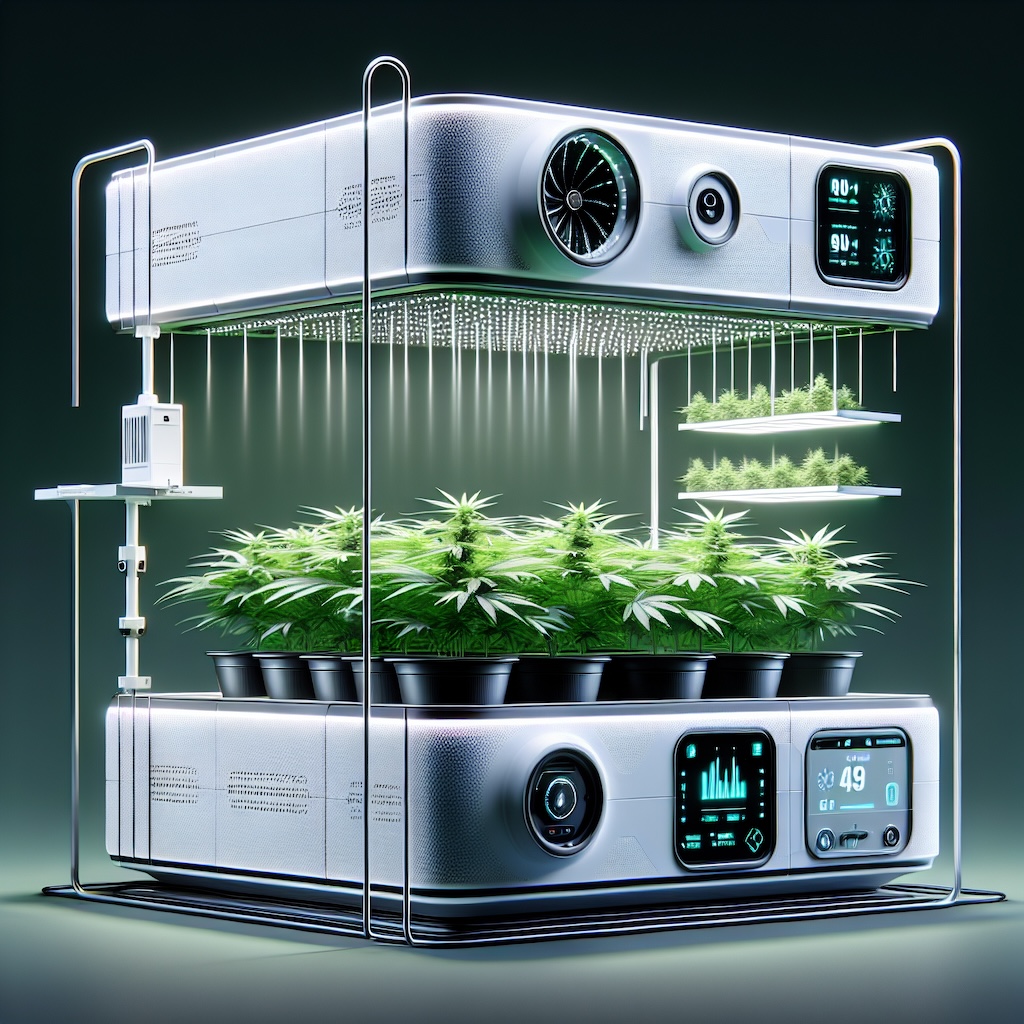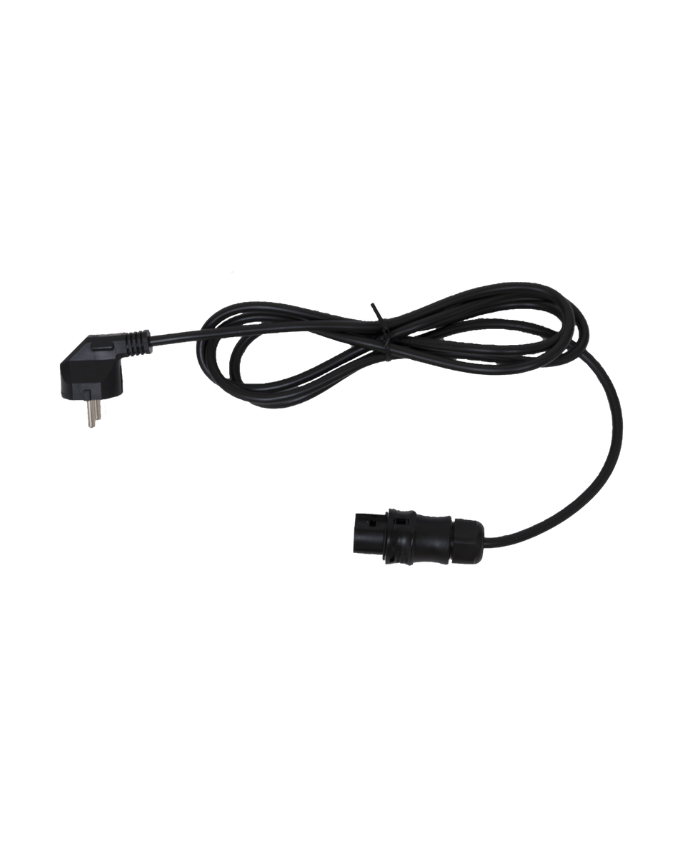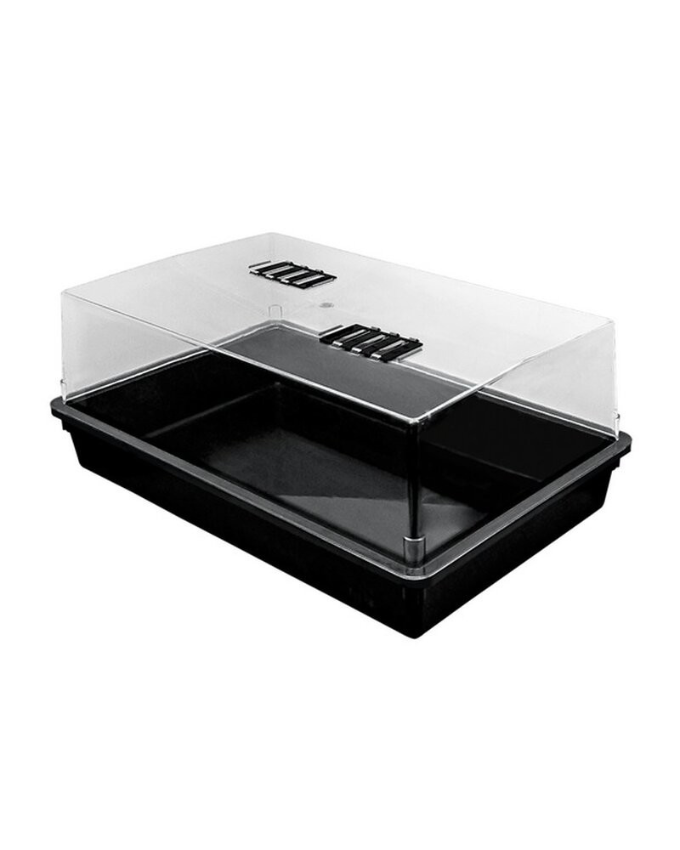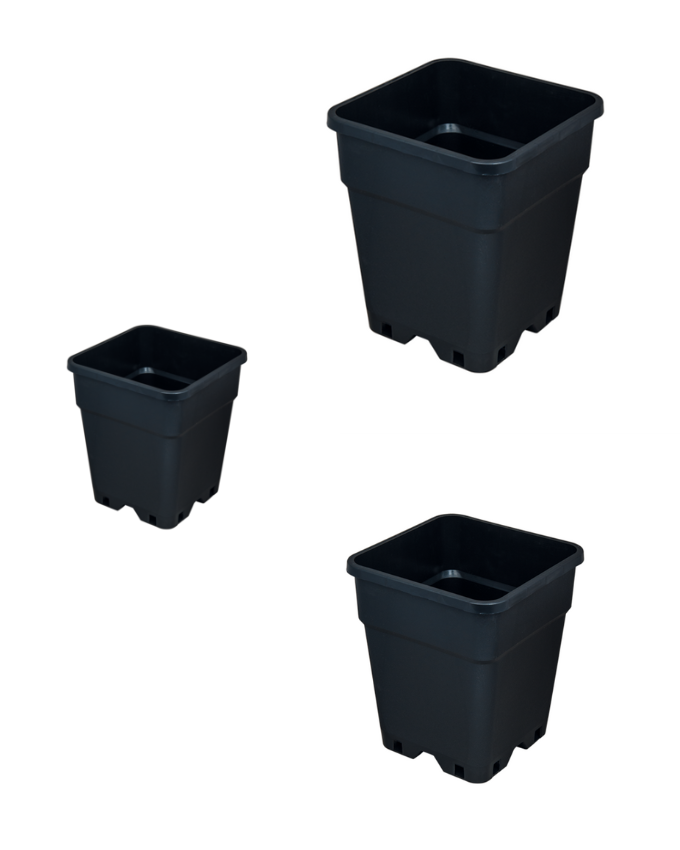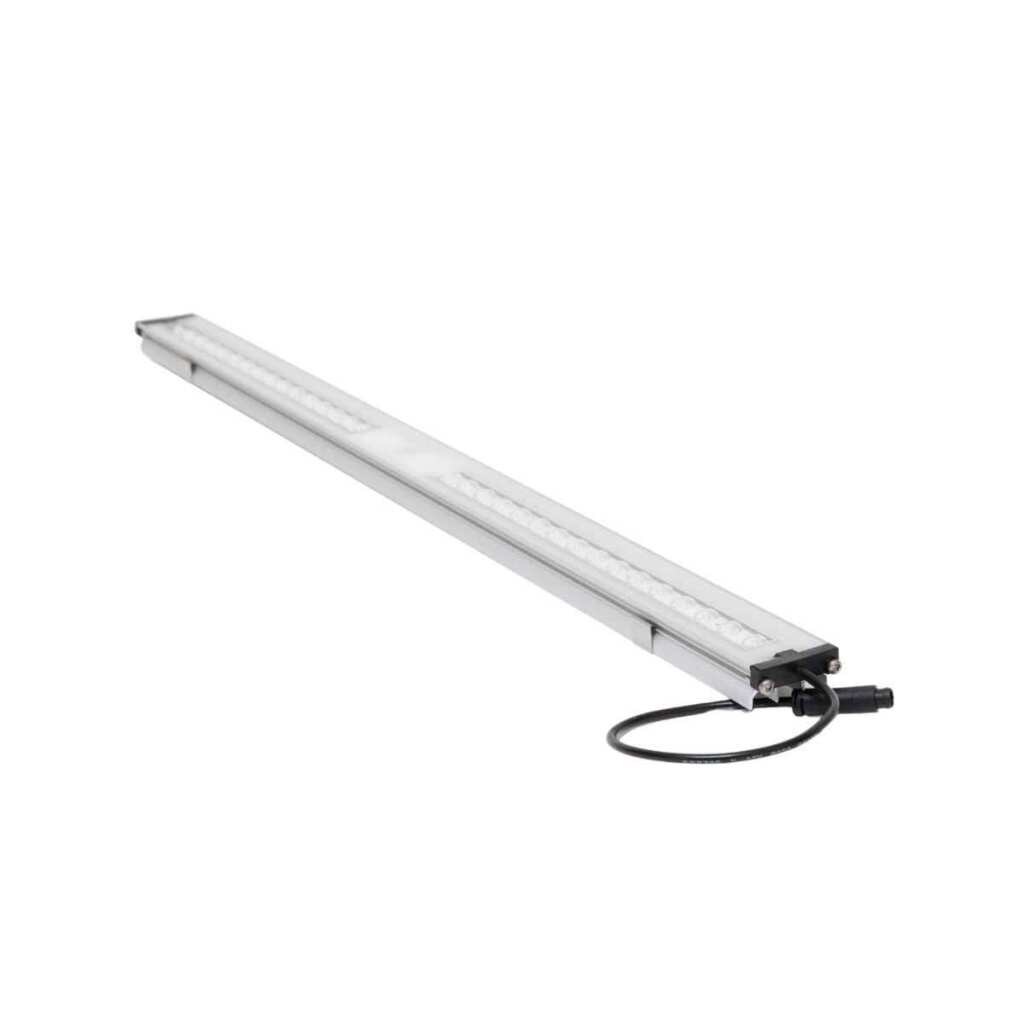BEGIN AT THE BEGINNING – HOW TO GROW CANNABIS INDOORS
Indoors, outdoors or greenhouse? Like everywhere else in life, there are options when it comes to choosing a growing location for cannabis cultivation. If you don’t want to grow cannabis in the garden, on the balcony or in a greenhouse, then there is indoor cultivation within your own 4 (or more) walls. In contrast to outdoor cultivation, which largely relies on sun, water and nature, indoor cultivation requires you to take on the role of nature. In a grow tent or grow room, the conditions are controlled and optimized so that the plants thrive in the best possible way. Light, temperature, humidity, substrate and nutrients are the key elements that every grower needs to keep an eye on. This means creating optimal climate and light conditions for the plants. This may sound like a lot of work at first, but we will try to explain everything step by step in our guide so that you can achieve the most successful grow possible and all that remains is the anticipation of a successful weed harvest.
SELECTION AND PREPARATION OF GROW SPACE
The selection and preparation of the grow space for indoor cannabis cultivation is essential to ensure optimal conditions for the growth and development of plants. This is less about appearance and more about functionality and efficiency.
-
room selection:
Choose a suitable room or area for your grow space. This can be a converted closet, a tent or even an extra room, depending on your capabilities and needs.
Consider the size of the space in relation to the number of plants you want to grow and the size of the equipment you will be using. Be sure to observe the legal framework conditions in the respective country of cultivation!
-
ventilation:
Ensure that the grow room has sufficient ventilation options to supply fresh air and remove stale air. A small to medium-sized fan should be installed to circulate the air in the room. Install an exhaust fan to improve air circulation and regulate the temperature and humidity. Use activated carbon filters to control odors and prevent unpleasant smells.
There are coordinated systems consisting of a filter, exhaust fan and, if necessary, exhaust air hose.
-
lighting:
Choose the right lighting for your grow room. LED lamps, sodium vapor lamps (HID) or fluorescent lamps are common options.
Calculate the correct wattage for your lighting based on the size of your grow space and the needs of your plants.
-
insulation and sealing:
Check the insulation and sealing of your grow space to prevent light leaks and control the light cycles of your plants.
Seal any openings, gaps or cracks to prevent pests from entering or unwanted odors from escaping.
-
power supply:
Make sure the grow space has adequate power sources to run your lighting, ventilation and other equipment.
Use safe and suitable extension cords and power strips to avoid overloads and fire hazards.
- heat source and regulation:
Consider the heat output of your lighting and other equipment and provide adequate cooling to prevent the grow space from overheating.
If necessary, use fans or air conditioning systems to keep the temperature at an optimum level.
-
Organization and setup:
Organize your grow space efficiently to create enough room for your plants and equipment.
Make sure that all necessary equipment is easily accessible and functional.
CHOOSING A GROW BOX – WHICH TENT DO YOU NEED FOR INDOOR GROWING?
If you decide on a grow tent, which in our opinion is the simplest and best option, we would like to give you a few tips here.
-
size and space requirements:
First determine how many plants you want to grow and how much space they need. Then choose a grow tent that offers enough space to comfortably accommodate your plants. Example: For 4 normal-sized plants, you should plan for approx. 1 m² of floor space.
Also consider the height of the tent, especially if you are growing varieties that grow tall and often become less “bushy”.
-
material and quality:
Pay attention to the quality of the materials from which the grow tent is made. High-quality tents are often made of robust, opaque material. They should be lined with white or silver foil on the inside and the zippers should also be of good quality, as you will need to open and close your tent regularly. The box should also have enough openings for cables etc.
Check the seams and zippers regularly to ensure that the tent is as opaque as possible and provides a good seal.
-
reflectivity:
Choose a grow tent with a reflective inner coating that reflects light efficiently and improves light output. The rule of thumb here is: White reflects light better than silver. Silver retains heat in the grow tent for longer. So choose the film based on your location and the light source.
-
ventilation options:
Make sure that the grow tent has sufficient openings for ventilation and the aforementioned air circulation.
Check whether the tent is equipped with sufficient inlet and outlet openings for exhaust fans and your air filter to regulate the air quality and temperature in the tent.
-
stability and load-bearing capacity:
Choose a grow box with a sturdy frame that is made of durable material such as steel or aluminum.
Pay attention to the maximum load capacity of the tent to ensure that it can support the weight of lighting, ventilation and other equipment.
LIGHTING – WHICH LAMPS DO YOU NEED FOR GROWING CANNABIS INDOORS?

Lighting is one of the most important factors when growing cannabis indoors, as it significantly influences the growth and development of the plants. There are various options for grow lights, including LED lights and fluorescent lights.
-
LED lights:
LED lights have gained popularity in recent years because they are more energy efficient and have a longer lifespan than traditional lighting options.
They produce a broad spectrum of light that meets the needs of plants from the vegetative phase to flowering, i.e. throughout the entire growth cycle,
Modern LED lamps are often dimmable and allow the light intensity to be adjusted according to the needs of the plants.
They generate less heat than other lighting options, which makes it easier to control the room temperature and reduces the risk of heat stress for the plants.
Although LED lamps may have a higher initial cost, the savings in energy costs and longer life will pay for themselves over time.
-
fluorescent lights:
Fluorescent lights, such as T5 or T8 tubes, are a cost-effective option for growing cannabis indoors, especially for beginners.
They imitate a specific light spectrum that is mainly suitable for the vegetative growth of plants. However, the plants require additional light for the flowering phase.
Fluorescent lights (fluorescent tubes) generate less heat than some LED lamps and can be positioned closer to the plants without causing burns to the plants.
They are easy to install and require less technical expertise than some other lighting systems
However, fluorescent lights have a lower light intensity than other options such as LED or HID lamps, which can affect the overall yield and quality of the crop. We only recommend fluorescent tubes for young plants or small cuttings.
-
HID lamps:
HID lamps produce light by passing an electric arc between two electrodes through a gas or a mixture of gases.
- The gas inside the lamp, typically mercury vapour, is ionized by the electric current, producing light.
- There are two main types of HID lamps used for indoor growing: Sodium vapor lamps (HPS) and metal halide lamps (MH).
- HPS lamps are known for their warm, yellow-orange light spectrum, which is particularly suitable for the flowering phase of plants.
- MH lamps produce a cooler, bluish light spectrum that is better suited to the vegetative growth phase of plants.
- The advantages of HID lamps are their high light intensity and their ability to cover a large area, making them ideal for larger grow rooms.
- They offer a broad light spectrum that meets the needs of plants throughout the entire growth cycle.
- However, HID lamps also have some disadvantages, including higher energy consumption and greater heat generation compared to other light sources.
- They also require regular lamp replacement and can be more expensive to run.
- HID lamps require a special ballast to regulate the electrical current and enable the lamp to start. ATTENTION ELECTRICIAN REQUIRED!
- They are usually mounted in reflectors to reflect the light more efficiently and ensure even light distribution in the grow room.
- The positioning of the lamps and the height above the plants are important to optimize the light intensity and ensure even illumination.
When selecting lighting for indoor cultivation, you should consider the needs of the plants, any budget constraints and your long-term cultivation goals.
BLOWING IN THE WIND – WHICH VENTILATION FOR INDOOR CULTIVATION
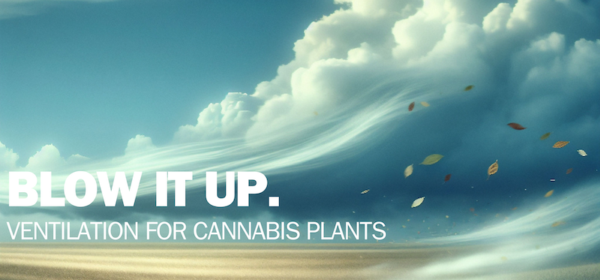
-
consider the room size:
Look at your growing space and think about how big it is and what the room layout looks like. This will influence the choice of ventilation elements.
-
determine the air flow requirement:
Depending on the size of the growing space and the number of plants, you will need to calculate the airflow required to ensure good ventilation.
-
check options for aeration elements:
There are various options such as exhaust fans, inlet fans, tube fans and silent fans. Consider which of these are best suited to your needs.
-
decide on exhaust air system:
Exhaust fans are especially important for removing hot, stale air from the room. You can choose between inline fans, axial fans and duct fans, depending on the size of your room and your budget.
-
add inlet fans:
Inlet fans provide fresh air into the room. Consider whether you want to use passive air inlets or active inlet fans to improve air circulation. We only recommend air supply fans for large tents or poorly ventilated basements.
-
activated carbon filters, humidifiers and dehumidifiers:
Activated charcoal filters are used to reduce odors and humidity. Humidifiers and dehumidifiers are helpful to adjust the room climate even more precisely if necessary. Normally, an exhaust fan + activated charcoal filter is absolutely sufficient to keep odors and humidity under control.
-
plan installation and placement:
Think about where best to place the ventilation elements to ensure optimum air circulation. Also think about how you can minimize the volume of the fans to maintain discretion.
-
consider budget and efficiency:
Consider budget when making your decision, but also look at the efficiency and longevity of the ventilation elements. It may be worth spending a little more money on high-quality fans that work quietly and effectively
TAKE CONTROL
Indoor growing is not only a way to grow cannabis plants (almost) all year round, but also allows you to take almost total control of the growing process. With the right equipment, basic knowledge and sufficient care, even beginners can be successful and achieve a rich harvest. The constant development of technologies and methods also promises continuous improvements and new possibilities for growing weed indoors. Be an insider…
